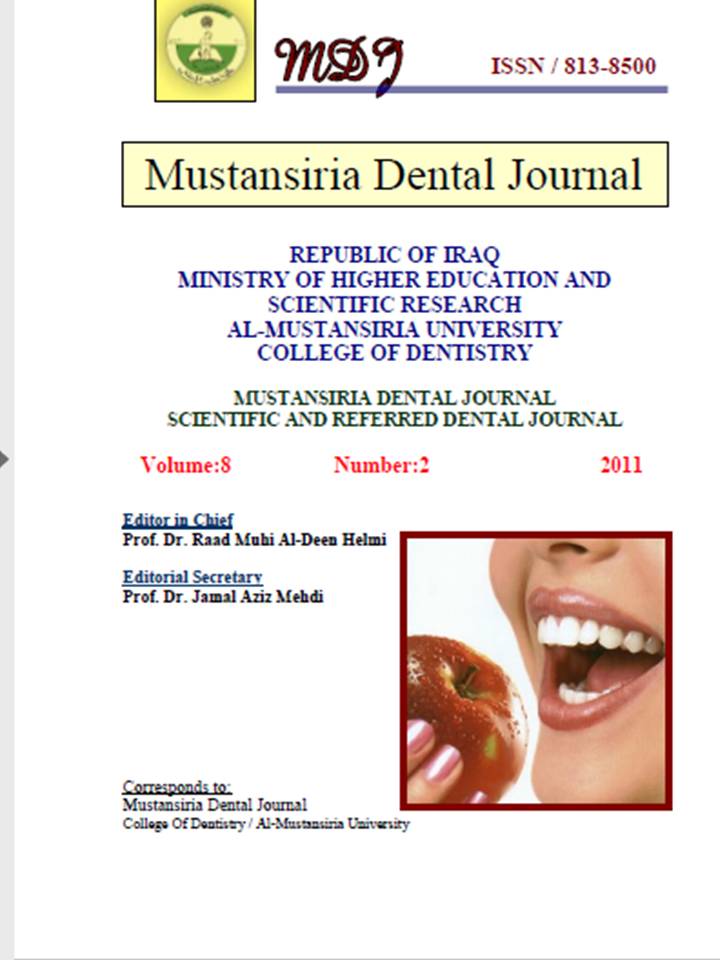Salivary Alkaline Phosphatase and Periodontal Disease
DOI:
https://doi.org/10.32828/mdj.v8i2.329Keywords:
Key words: alkaline phosphatase, plaque index, probing depth.Abstract
Saliva is an easily collected fluid that contains locally and systemically derived
markers of periodontal disease. The purpose of this study was to compare the level of
salivary alkaline phosphatase activity in healthy subjects and patients with periodontal
disease (gingivitis and periodontitis), and to evaluate the relationship of this enzyme
with different clinical parameters in all patients included in the study.
The study included 65 patients referred to Department of Oral Diagnosis, College
of Dentistry, University of Baghdad, they were divided into three groups, 20 healthy
subjects, 20 subjects with gingivitis and 25 one with periodontitis. The clinical
parameters including plaque index (PI), gingival index (GI), probing pocket depth
(PPD) and clinical attachment loss (CAL) were recorded and salivary samples
collected for analysis of alkaline phosphatase (ALP) levels.
A highly significant increase in mean values of clinical parameters was found in
patients with periodontal disease (gingivitis and periodontitis) compared to healthy
subjects, also a highly significant increase in the mean values of alkaline phosphatase
activity was illustrated as the severity of periodontal disease increased. ALP level was
closely related to the gingival index, probing depth and attachment loss in patients
with periodontal disease, while no relation was shown to plaque index.
Salivary alkaline phosphatase could be used as a useful marker for monitoring
periodontal disease.

Downloads
Published
Issue
Section
License
The Journal of Mustansiria Dental Journal is an open-access journal that all contents are free of charge. Articles of this journal are licensed under the terms of the Creative Commons Attribution International Public License CC-BY 4.0 (https://creativecommons.org/licenses/by/4.0/legalcode) that licensees are unrestrictly allowed to search, download, share, distribute, print, or link to the full texts of the articles, crawl them for indexing and reproduce any medium of the articles provided that they give the author(s) proper credits (citation). The journal allows the author(s) to retain the copyright of their published article.
Creative Commons-Attribution (BY)








